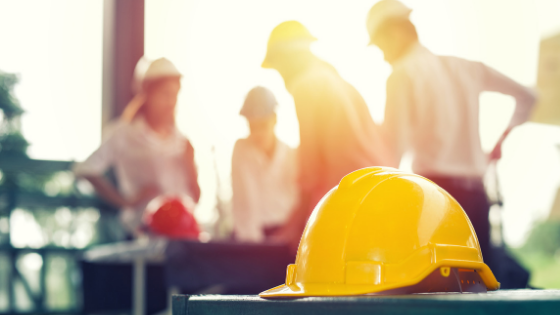Of the 4,779 worker fatalities in 2018, 1,008 of them (21.1%) were in construction. In other words, one in five worker deaths happened in construction.
This is primarily due to four hazards: falls, struck-by-object, electrocution, and caught-in/between, better known as construction’s Fatal Four. Together, they account for more than half of all construction worker deaths.
If you’ve built your career on bringing safety in construction, you’re all too familiar with these four hazards. Here’s what you need to watch out for and how to keep these hazards away from your crew.
Fall Hazards
Fall hazards are by far the most common fatal hazard of the four, accounting for 33.5% of construction fatalities in 2018.
Unfortunately, construction sites are full of potential falling hazards, large or small. Whether workers fall off of ladders, fall into sinkholes, fall from large skyscraper construction areas, or even just fall a few feet, you have to account for falling hazards at almost every turn.
Among the most common falling hazards are falls from ladders, unprotected ledges and openings, and improper scaffolding, so you should tackle those first. Employers are required to provide appropriate fall protection and safe ladders. They are also responsible for verifying that scaffolds are safely constructed and that worksites are safely maintained.
Struck by Object Hazards
Struck-by injuries happen when someone is forcibly struck by an object or piece of equipment. They can be caused by:
- Falling objects
- Flying objects
- Rolling objects
- Swinging objects
That said, struck-by hazards are often confused with caught-in/between hazards. The key distinction is whether the impact alone caused the injury. If impact alone caused injury, it is considered a struck-by hazard.
Construction workers are most often struck by heavy machinery, falling or flying objects, or walls under construction. As such, workers should always wear protective equipment, including high-visibility vests.
Machine operators also need to be careful. Machines should always be checked prior to use and should never be operated if you can’t see behind you while backing up. Large machines should also have a reverse alarm that all workers can hear.
Electrocution Hazards
Electrocution happens when someone is exposed to a lethal amount of energy. This is tragically common on construction sites because workers are laying wiring.
An electrical hazard is considered a serious workplace hazard if it exposes workers to the following:
- Burns
- Electrocution
- Shock
- Arc flash/arc blast
- Fire
- Explosions
You can remember this with a simple acronym: BE SAFE.
Power lines are a common electrocution hazard on construction sites. The best way to stay safe is to simply stay away from them. If you have to operate heavy equipment near power lines, contact the utility company to de-energize the line before you begin work. Always use non-conductive tools and equipment around live lines, and cordon off the area around a live line.
Caught-In/Between Hazards
A caught-in/between hazard is similar to a struck-by hazard. The difference is that in a caught-in/between hazard, impact alone is not sufficient to cause injury. The injury is actually caused when someone is stuck between two objects, causing them to be caught, crushed, squeezed, compressed, or pinched.
Events classified as caught include:
- Being pulled into or caught in machinery
- Being compressed or crushed between rolling, shifting, or sliding objects
- Cave-ins
These events are most commonly caused by power tools, heavy machinery, and trenching. Workers should never operate power tools without the appropriate protection, nor should they operate power tools without safety guards. Heavy machinery operators should be careful not to overload the machine so it does not fall over.
Lastly, trenches should always be equipped with the appropriate protection system. Trenches deeper than 20 feet require a specialized engineer to create the protection system.
Practicing Safety in Construction
When it comes to safety in construction, you have your work cut out for you. That’s why we designed our safety software to meet your biggest challenges head-on and provide the one thing you need most on a construction site: safety awareness.
Ready to change the way you think about safety on a job site? Then let’s talk. Get in touch today to learn more.
